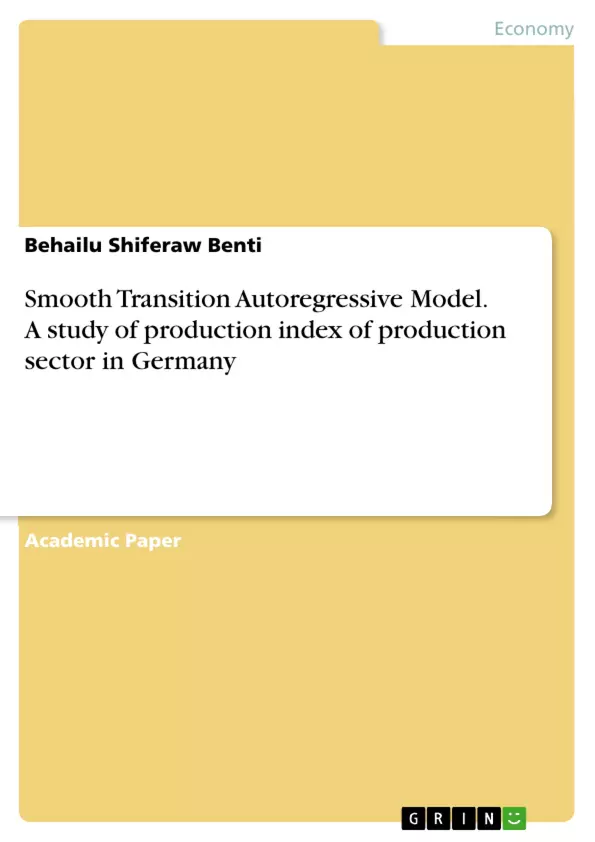The main aim of this seminar is to define, examine and present Smooth Transition Autoregressive Model (STAR) which is a model used to analyze nonlinear time-series economic data with regime-switching. In going forward, the overall structure of the seminar is designed to study the nonlinear features of production sector production index of Germany using data from January 1991 to April 2017. The author did first a Chow Test to evidence the existence of a data structural breakpoint. Then a model specification procedure given by Teräsvirta (1994) was followed. The author used, accordingly, three steps to specify the model. First, a linear AR model was developed using the data. Secondly, a linearity test against the STAR model was carried out. Once a test of the null hypothesis of linearity against non-linearity is rejected by the carried out Lagrange Multiplier (LM) test, the delay parameter d was determined. Afterwards, a choice between the LSTAR and the ESTAR model was made using a sequence of tests.
Finally, the estimation of the model is done. As the results from the set of tests indicate, the STAR model is found to be appropriate for modeling and analyzing the data.
Inhaltsverzeichnis (Table of Contents)
- Introduction
- Smooth Transition Autoregressive (STAR) Model
- Introduction to STAR
- Logistic and Exponential STAR models (LSTAR and ESTAR)
- Data
- Empirical Results and Interpretations
- Conclusions
Zielsetzung und Themenschwerpunkte (Objectives and Key Themes)
This seminar aims to define, examine, and present the Smooth Transition Autoregressive (STAR) model, a model used to analyze nonlinear time-series economic data with regime-switching. It investigates the nonlinear features of the production sector production index of Germany using data from January 1991 to April 2017.
- Nonlinearity in Economic Time Series
- Regime-Switching Behavior
- Smooth Transition Autoregressive (STAR) Model
- Model Specification and Estimation
- Empirical Analysis of German Production Index
Zusammenfassung der Kapitel (Chapter Summaries)
- Introduction: This chapter introduces the concept of nonlinearity in economic time series and explains the importance of considering regime-switching behaviors. The STAR model is presented as a suitable tool for analyzing such behaviors.
- Smooth Transition Autoregressive (STAR) Model: This chapter provides a detailed introduction to the STAR model, explaining its theoretical foundation and outlining the steps involved in model specification and estimation.
- Data: This chapter describes the data used in the study, which is the industrial production index of Germany from January 1991 to April 2017.
- Empirical Results and Interpretations: This chapter presents the empirical results of the analysis and provides interpretations of the findings.
Schlüsselwörter (Keywords)
The main keywords and focus topics of the text include: smooth transition autoregression, regime switching, testing for nonlinearity, Lagrange Multiplier (LM) test, industrial production index, Germany, economic time series.
- Quote paper
- Behailu Shiferaw Benti (Author), 2017, Smooth Transition Autoregressive Model. A study of production index of production sector in Germany, Munich, GRIN Verlag, https://www.grin.com/document/490761



